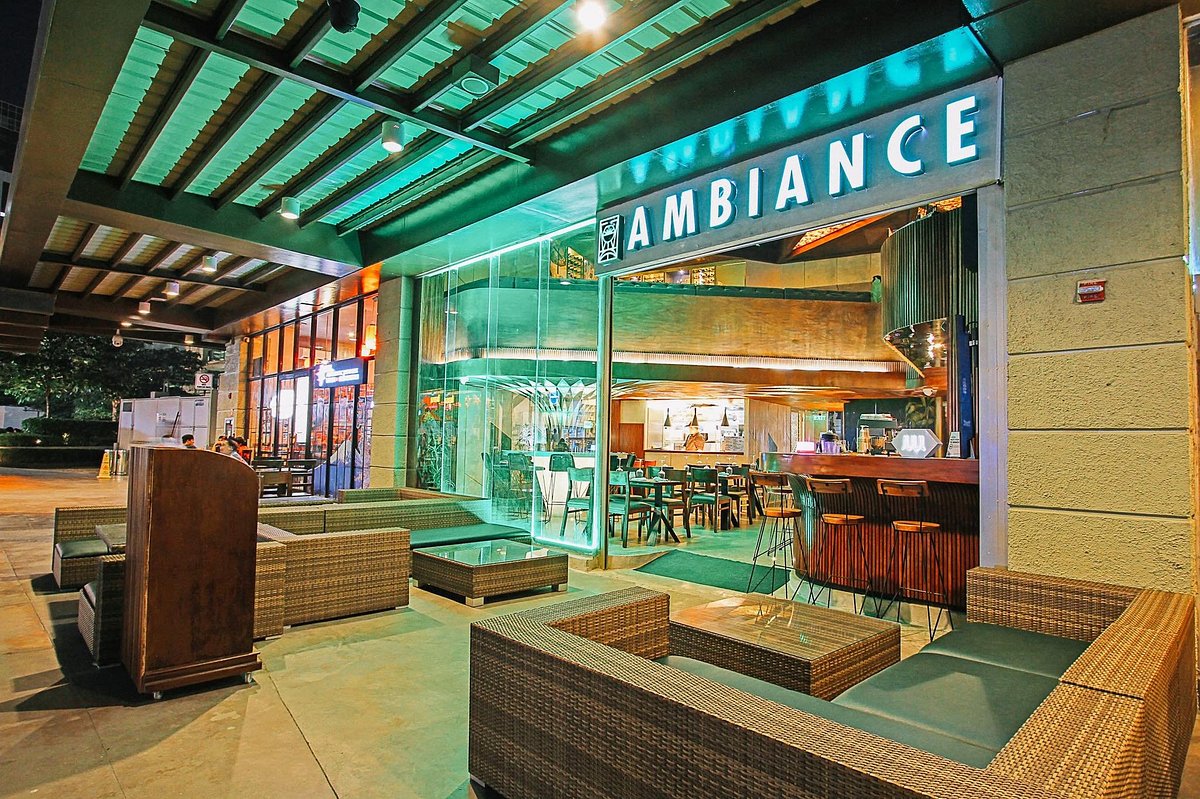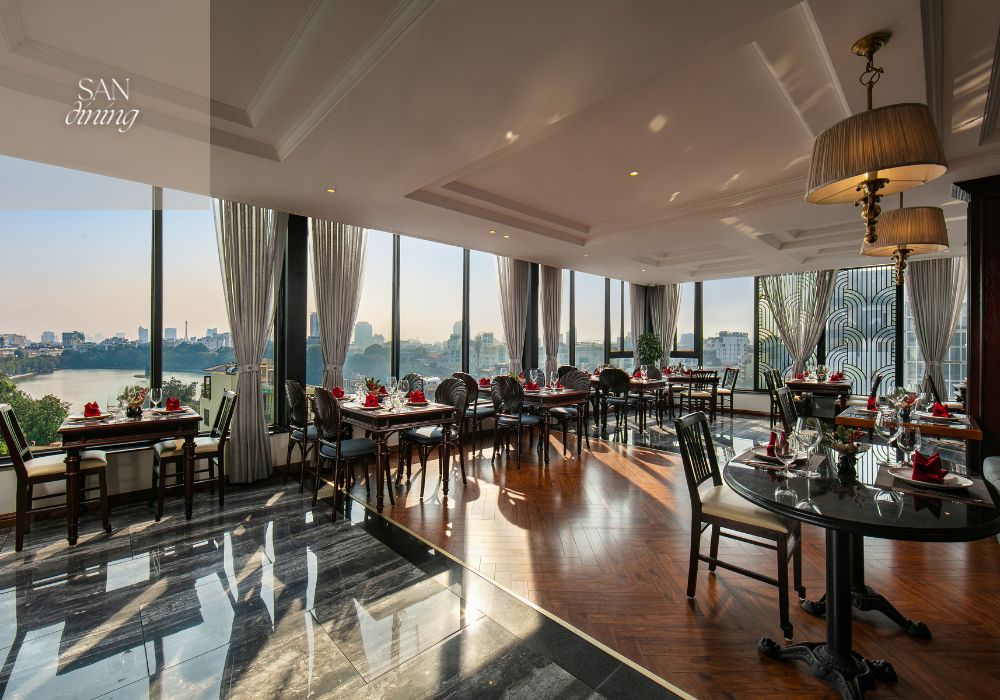Best Asian Restaurant Islamabad: Experience Tastes from Throughout Asia
Best Asian Restaurant Islamabad: Experience Tastes from Throughout Asia
Blog Article
Savor Authentic Eastern Cuisine With a Pan-Asian Spin for a Culinary Adventure
Starting a culinary journey through authentic Eastern food, improved with a Pan-Asian twist, uses an one-of-a-kind possibility to discover the rich tapestry of tastes that define the area's varied culinary traditions. This experience welcomes you to relish the charming equilibrium of tastes-- sweet, salted, spicy, and sour-- balanced by aromatic herbs and spices. Visualize the cutting-edge blend of Thai curry and ramen or the unanticipated joy of sushi burritos. As you contemplate these enticing recipes, think about the social narratives and historic impacts that form them, each bite providing a story waiting to be uncovered.

Discovering Pan-Asian Flavors
In the realm of worldwide gastronomy, Pan-Asian food attracts attention for its remarkable diversity and the unified interplay of flavors from various Asian societies. This culinary technique celebrates the rich practices and special components found throughout the continent, developing a tapestry of tastes that is both gratifying and appealing. Secret to Pan-Asian food is its ability to balance different tastes-- wonderful, salted, spicy, and sour-- while highlighting the freshness and quality of each ingredient.
From the umami-rich soy sauce of Japan to the intense chili peppers of Thailand, Pan-Asian food offers a substantial palette of tastes. These components are typically combined in creative ways, enhancing meals with layers of intricacy. For circumstances, making use of great smelling natural herbs such as lemongrass and cilantro, common in Vietnamese and Thai food, adds a rejuvenating illumination to recipes, while the consolidation of coconut milk supplies a luscious, abundant appearance.
The emphasis on fresh produce and fragrant flavors makes sure that each meal is not just a feast for the taste but also for the senses. Pan-Asian cuisine invites diners to start a culinary journey, checking out the huge and varied landscapes of Oriental gastronomy with every bite.
Combination Meals to Try
While Pan-Asian food is celebrated for its traditional tastes, the modern cooking landscape is progressively embracing blend dishes that mix these classic elements with influences from various other areas. This ingenious approach not only honors the abundant heritage of Eastern cookeries however additionally introduces unique preference experiences that appeal to modern tastes.
A prime instance of such a combination recipe is the Korean-Mexican taco, where seasoned bulgogi beef is wrapped in a cozy tortilla, topped with kimchi and a hot gochujang-infused salsa. This mix marries the bold, savory tastes of Korea with the vibrant, fresh aspects of Mexican cuisine. In a similar way, sushi burritos have acquired appeal, joining together the fragile creativity of Japanese sushi with the passionate, hand-held convenience of a burrito, usually including fusion components like tempura shrimp and avocado with a drizzle of wasabi mayo.
An additional significant dish is Thai curry ramen, which instills the luscious, fragrant seasonings of Thai curry right into the soothing broth of traditional Japanese ramen, developing a harmonious blend that entices the senses. These combination recipes extend beyond mere uniqueness; they stand for a cooking dialogue between societies, encouraging expedition and development in the world of Pan-Asian food.
Necessary Ingredients and Flavors
To absolutely appreciate Pan-Asian food, one have to comprehend the vital components and flavors that form its structure. This varied culinary design draws from a rich tapestry of Asian practices, using a harmonious blend of structures and flavors.
Fragrant aspects are essential, with ginger, lemongrass, and garlic being ubiquitous throughout different Pan-Asian dishes. These ingredients give an aromatic base that enhances the intricacy of tastes. Spices such as celebrity anise, cardamom, and cinnamon introduce heat and character, echoing impacts from areas like China and India.

Food Preparation Strategies and Tips
Understanding the art of Pan-Asian cuisine needs experience you could try these out with its unique food preparation techniques, each adding to the dynamic tapestry of flavors this culinary practice is commemorated for. Central to these methods is the stir-fry, a fast food preparation technique that protects the nutritional stability and vivid colors of components. Making use of a frying pan, the stir-fry technique permits even heat distribution, necessary for attaining the characteristic texture and flavor balance of Pan-Asian dishes.
Another essential method is steaming, especially common in Chinese cuisine. This gentle technique preserves the natural flavors and nutrients of active ingredients, making it suitable for fish and shellfish and vegetables. Dumplings, a beloved staple, typically profit from steaming, resulting in soft, succulent textures.
Grilling, additionally integral, gives great smoky midsts to meals such as Korean bulgogi or Japanese yakitori (Chinese food Islamabad). This method typically involves marinading components, allowing tastes to permeate deeply prior to food preparation over an open fire or hot plate
Lastly, grasping the art of balancing tastes-- wonderful, sour, salted, bitter, and umami-- is critical. Correctly layering these aspects can boost a meal from common to amazing, offering a complicated and satisfying culinary experience that embodies the significance of Pan-Asian cuisine.
Eating Experiences Worldwide
Across the world, Pan-Asian food offers an unrivaled eating experience, commemorated for its rich tapestry of tastes and lively presentations. This culinary sensation has transcended cultural borders, capturing the hearts local restaurants and tastes buds of food lovers worldwide. In worldwide cities like New York, London, and Sydney, Pan-Asian restaurants act as melting pots where culinary customs from Thailand, Japan, China, and past merge, giving restaurants with a diverse mix of recipes that highlight the area's diversity.
The global appeal of Pan-Asian cuisine hinges on its capability to provide both authenticity and advancement. Cooks masterfully wed traditional active ingredients such as lemongrass, soy sauce, and miso with contemporary methods, leading to meals that are both refreshingly brand-new and familiar. This blend enables diners to start a culinary journey that appreciates heritage while welcoming modernity.
In addition, eating experiences are boosted via thoughtfully developed atmospheres that show the ethos of Pan-Asian appearances. From minimalist Japanese-inspired insides to vivid Thai-themed rooms, each dining establishment uses an one-of-a-kind setting that enhances the cooking offerings. Therefore, clients are not just taking in a meal but partaking in a social experience, making Pan-Asian eating an absolutely international sensation.
Final Thought
The exploration of Pan-Asian cuisine supplies an extensive understanding of the detailed interaction of flavors and culinary practices across Asia. By embracing combination recipes such as Thai curry ramen and sushi burritos, the culinary journey not only highlights the flexibility of standard components but additionally showcases ingenious contemporary strategies. This gastronomic adventure, enriched by necessary spices and cooking methods, offers an unique possibility to value the multiculturalism and cooking artistry that define Pan-Asian cuisine on a worldwide range.
Beginning on a cooking journey through genuine Oriental food, enhanced with a Pan-Asian twist, supplies an one-of-a-kind opportunity to explore the abundant tapestry of flavors that specify the region's varied culinary traditions.In the world of worldwide gastronomy, Pan-Asian cuisine stands out for its remarkable diversity and the unified interaction of tastes from different Eastern societies. Key to Pan-Asian cuisine is its ability to stabilize contrasting tastes-- pleasant, salted, spicy, and sour-- while highlighting the quality and quality of each active ingredient.

Report this page